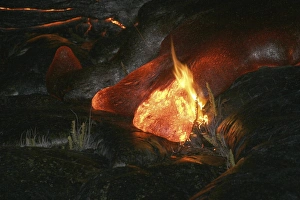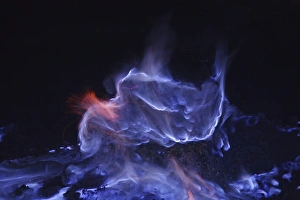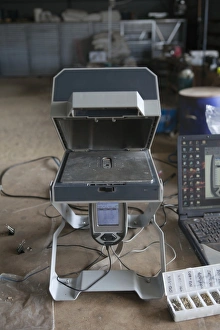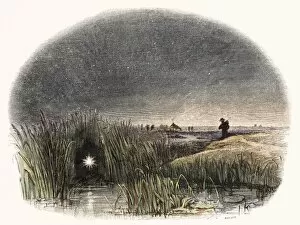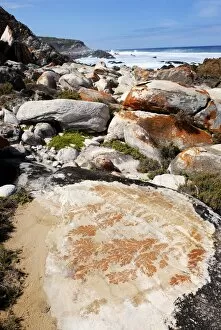Geochemistry Collection
"Exploring the Earth's Dynamic Nature: Geochemistry Unveiled" From the mesmerizing Kilauea Pahoehoe lava flow on Big Island
All Professionally Made to Order for Quick Shipping
"Exploring the Earth's Dynamic Nature: Geochemistry Unveiled" From the mesmerizing Kilauea Pahoehoe lava flow on Big Island, Hawaii to the burning sulfur of Kawah Ijen in Java Island, Indonesia, geochemistry takes us on a captivating journey through our planet's diverse landscapes. Witnessing the raw power and beauty of nature at Kilauea Pahoehoe lava flow is a testament to the intricate processes that shape our world. The molten rock flowing gracefully like liquid fire reminds us of the complex chemical reactions occurring beneath our feet. Venturing further into Bolivia's Cordillera Real, we encounter ethereal clouds dancing above majestic peaks. These atmospheric phenomena are not only a sight to behold but also hold valuable clues about our climate and weather patterns. Gazing at satellite images capturing stratocumulus clouds over the vast Pacific Ocean from both MESSENGER spacecraft and Apollo 6 mission reveals how meteorology intertwines with geochemistry. Understanding cloud formations aids scientists in predicting storms, studying air pollution dispersion, and unraveling global climate dynamics. As day turns into night, vibrant hues paint the sky during sunset—a celestial spectacle that showcases nature's artistic flair while reminding us of carbon dioxide oil extraction research. This innovative field seeks sustainable methods for harnessing energy resources while minimizing environmental impact. Geochemistry delves deep into Earth's composition and processes—unraveling its mysteries one element at a time. From volcanic eruptions shaping landforms to sulfuric fumes emanating from geothermal vents or even exploring distant planets like Mercury—the study unveils secrets hidden within rocks, gases, liquids, and minerals. With every discovery made by passionate researchers worldwide, we inch closer to comprehending Earth's past and present—and perhaps even unlocking insights crucial for building a sustainable future for generations to come.

